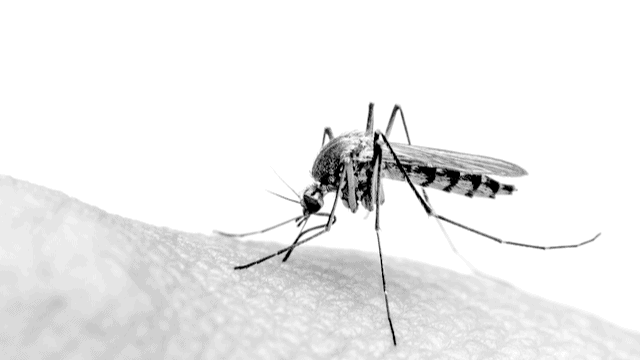June 07, 2021
Back to school – safely. In a study led by researchers at Johns Hopkins Bloomberg School of Public Health, data from a large online survey in the United States was used to investigate the association between in-person schooling and COVID-19 outcomes at different levels of school mitigation measures. There was a positive association between in-person schooling and COVID-19 outcomes at low levels of mitigation, but this association was not observed when seven or more mitigation measures were reported. Among teachers working in schools with a high level of mitigation measures, the increase in COVID-19–related outcomes was similar to that observed in other occupations. Some of the most effective individual mitigation measures were teachers masking, cancelling extracurricular activities, and daily symptom screening. [Science]
The missing season: The impacts of the COVID-19 pandemic on influenza. Each year, seasonal influenza kills 260,000–650,000 globally; however, in both Southern and Northern hemispheres, seasonal influenza all but disappeared during 2020-2021. In the United States and Europe, 0.15–0.2% of samples were reported as positive for flu in 2020/2021 compared to 18–23% in 2019/2020. Researchers reviewed the evidence for possible reasons behind the suppressed season, including viral competition between SARS-CoV-2 and influenza, increased influenza vaccinations, and behavioral interventions against COVID-19. However, as COVID-19 is suppressed through vaccinations and mitigation measures are lifted, the potential for the spread of other respiratory viruses will increase. Paying close attention to viral dynamics and host ecology and behavioral interventions will be crucial in preparing for potentially unpredictable future influenza seasons. [Vaccine]
Rapid respiratory pathogen testing did not decrease antibiotic use in urgent care settings. Researchers from the University of Colorado conducted a randomized clinical trial to determine whether rapid respiratory pathogen testing leads to a decrease in the use of antibiotics in children presenting to an Emergency Department with influenzalike illness. The 913 children enrolled in the trial between 2018 and 2019 were randomly assigned 1:1 to an intervention group (clinician knows results within 45 minutes) and control group (results not given, routine clinical care), with antibiotic prescribing being the primary outcome. While a more judicious prescribing of antiviral agents was seen in the intervention group, there was no decrease in antibiotic prescribing, indicating a limited role for rapid respiratory pathogen testing in children in urgent care settings. [JAMA]
Traditional practices and perceptions of profitability promote antibiotic use among UK sheep farmers. A 2017 flock survey of British sheep farmers evaluated farmer characteristics, the health of flocks, antibiotic use practices, and opinions towards antibiotic use. A slight majority (51.4%) of respondents reported that they had discussed antibiotic use with their veterinarian in the previous year and cluster analysis identified similar groups of farmers based on their survey responses. One cluster was identified as the “concordant” group who agreed with antibiotic use recommendations, including decreased prophylactic use of antibiotics. In contrast, the other group was “discordant” and expressed favorable opinions of antibiotic use to prevent disease. Farmers who used antibiotics prophylactically in the previous year had higher odds of belonging to the discordant group. [PLOS One]
High proportions of pneumococcal infections and antibiotic resistance in under-five children in India. A hospital-based sentinel surveillance network for bacterial meningitis was established in India in 2012 to better understand the burden of bacterial meningitis and vaccines’ potential role in averting meningitis cases. Between 2012 and 2016, 71% of the 586 laboratory-confirmed and 10,050 suspected meningitis cases had received antibiotics before lumbar puncture. Serotypes covered by the 13-valent pneumococcal conjugate vaccine caused 72% of the pneumococcal infections, with forty-five isolates exhibiting multidrug resistance. The findings support the rolling out of PCV in the National Immunization Program and warrant expansion of surveillance methods. [Vaccine]
Successful phase I clinical trial for Zika vaccine. A purified, inactivated, Zika virus vaccine candidate called TAK-426 elicited favorable immune responses among flavivirus-naive and flavivirus-primed adults in a Phase I clinical trial, which enrolled 271 participants. Participants randomly received two intramuscular injections, 28 days apart, of placebo or vaccine containing various antigen concentrations. The trial was conducted between November 2017 and October 2018 in 7 medical clinics in the US and 2 in Puerto Rico. There were no serious adverse events or deaths among vaccine recipients. [Lancet ID]
A drop in dengue cases in coastal China city. In 2020, there were only 34 documented cases of dengue fever in Guangzhou, China’s third-largest city located on the southeastern coast. Of those, 32 were imported cases. Since 1978, the city has faced recurrent dengue outbreaks reporting over 1,000 cases per year for four of the past ten years, including nearly 40,000 cases in 2014. According to researchers, the decline in cases in 2020 was likely due to quarantine restrictions for international travelers to reduce COVID-19 transmission. [PLOS NTDs]
Low-birth-weight babies born in LMICs may benefit from immediate Kangaroo Mother Care. Kangaroo mother care, consisting of both continuous skin-to-skin contact of the infant with the chest of the mother (or another caregiver) and feeding exclusively with breast milk, is among the most effective interventions for preventing death in infants with low birth weight. Researchers from the World Health Organization conducted a randomized controlled trial in five hospitals in Ghana, India, Malawi, Nigeria, and Tanzania to assess the benefit of immediate Kangaroo Mother Care compared to conventional care until stabilization. For infants with low birth weight (between 1.0 and 1.799 kg), initiating skin-to-skin care earlier on after birth could improve neonatal survival by 25%. Kangaroo Mother Care resulted in a significant reduction in neonatal mortality, but not in mortality within the first 72 hours. [N Engl J Med]
Parental education mitigates adverse effects of shorter gestational age on school outcomes. Researchers from the Hvidovre University Hospital and the University of Copenhagen in Denmark assessed the role of parental education level on the relationship between gestational age and two school outcomes at 16 years: completion of final exams and grade point average. Data on singletons born in Denmark between 1995 and 2001 were acquired from a nationwide register-based cohort study. Of 425,101 participants, 4.7% were born before 37 weeks. Among children whose parents had a lower education level, the risk of not completing final exams increased from 23.9% for those born in week 40 to 36.6% for those born in week 28. Similar findings for grade point average also suggest that parental education level may mitigate the adverse effects of shorter gestational age on school outcomes. [Paediatric and Perinatal Epidemiology]
Significant mortality attributed to tobacco smoking. As part of the Global Burden of Diseases, Injuries, and Risk Factors Study (GBD), researchers from the GBD 2019 Tobacco Collaborators group reviewed prevalence trends and estimates of tobacco consumption in 204 countries from 1990 to 2019. In 2019, nearly 15% of the world population still smoked, resulting in almost 8 million smoking-associated deaths globally. Among males, smoking was the leading risk factor for death, attributing to 20.2% of all-cause deaths and the leading risk factor for disability-adjusted life-years (DALYs). Despite a significant reduction in smokers since 1990, 113 of the 204 countries surveyed had a significant increase in smokers since 1990, while 111 of 204 countries had a significant increase since 2005. In the absence of intervention, deaths and DALYs attributable to smoking will continue to increase, highlighting the need for strong evidence-based policies to maximize reductions in smoking prevalence. [Lancet]
Photo: Shutterstock













